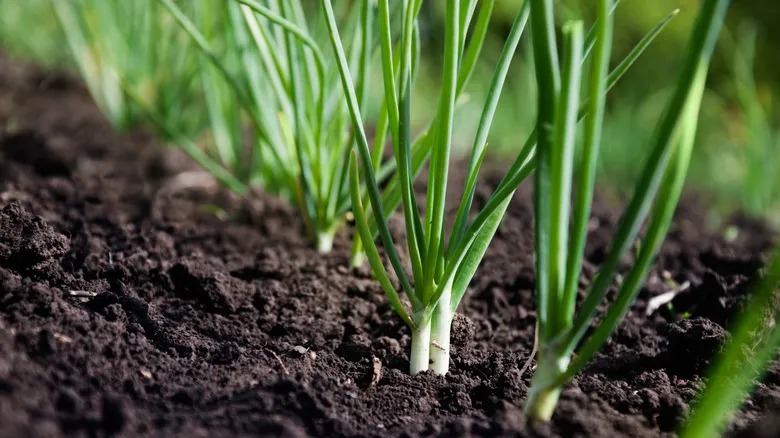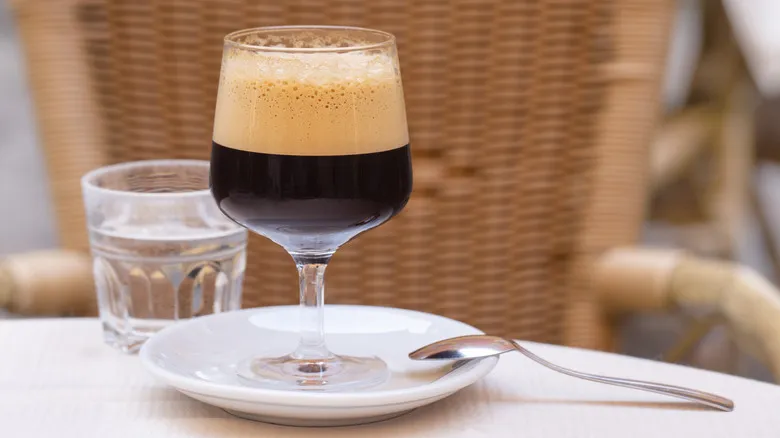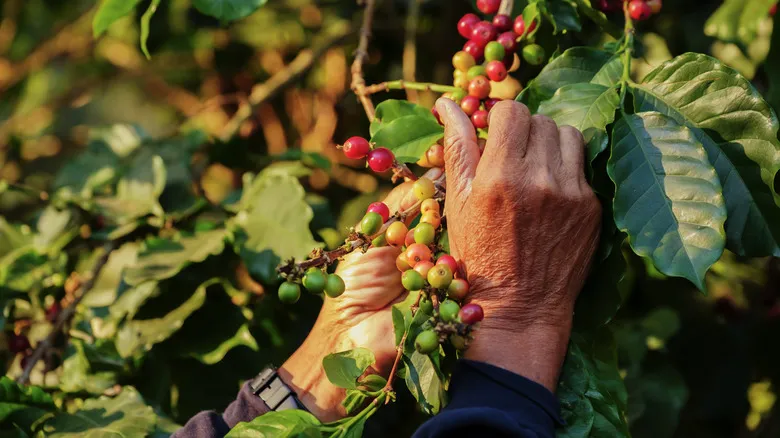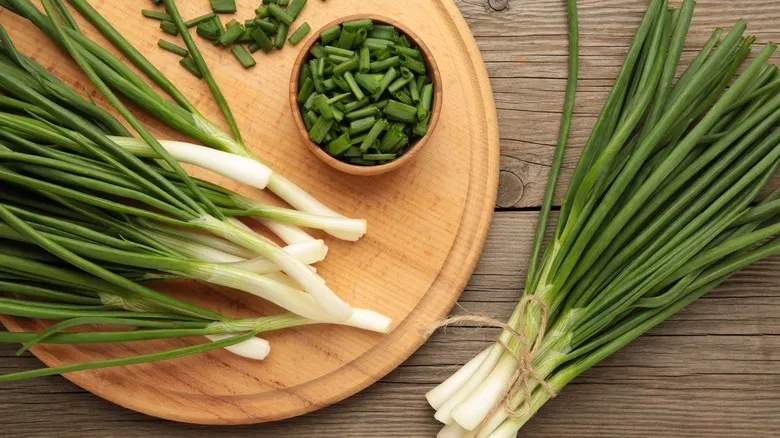Scallion lattes are part of China's 'dark cuisine' trend

This isn't a recipe with practical uses, like the one for coffee with baking soda that can ease stomach discomfort. Nor is it a drink born out of necessity, such as the unusual foods consumed during the Great Depression. Instead, green onion lattes and other intriguing recipes are part of China's "hei an liao li" trend, which translates to "dark cuisine." As chef Jenny Gao, who hails from China, explained to the New York Times, dark cuisine "can refer to anything that's particularly hard to swallow," including food prepared in unsanitary conditions, "amateur disasters," and "deliberately creative dishes that are unexpected." Green onion lattes clearly fit into the third category, alongside trends like adding cheese and basil to coffee or serving it in a hollowed-out pepper.
However, just because a drink is unconventional doesn't guarantee it will be a hit. While some individuals enjoy the combination—like the Instagram user who remarked, "better than coriander at least"—the overall reaction to the latte has been largely negative. Despite the lukewarm reception, it has still created a buzz for the cafés that offer it. In a landscape dominated by chain coffee shops, embracing dark cuisine allows smaller businesses to maintain a competitive edge in the market.
More examples of dark cuisine

Green onion and even pork belly lattes are just the tip of the iceberg when it comes to extreme dark cuisine. There are other espresso concoctions that truly challenge culinary norms. In the southeastern city of Zhangzhou, for instance, baristas serve coffee infused with mustard, soy sauce, and octopus. Meanwhile, in Xiamen to the east, coffee shops invite patrons to dip beef meatballs and chili noodles into their coffee. Over the last few decades, coffee culture has surged in popularity across China, with the visual appeal of coffee playing a significant role in this trend. Viewed through this lens, coffee cups filled with unusual ingredients—ranging from vegetables to proteins—certainly make a striking impression.
Beyond coffee, dark cuisine has influenced a wide array of recipes. From kiwi omelets to soups crafted from cotton candy and gravy, both professional chefs and home cooks have embraced the creativity and fun that this trend offers. It is believed that dark cuisine emerged as a subtle form of rebellion against the restrictive Chinese government, exemplifying the connection between culinary arts and self-expression. This movement has even inspired some delicious innovations, such as drizzling chili oil over ice cream. Ultimately, taste is a personal experience, and the only way to determine if a scallion latte is truly enjoyable is to give it a try yourself. Who knows? It might just kickstart your own adventure into the world of dark cuisine.
Recommended

Shakerato: The Italian Iced Coffee Style You Can't Miss Out On

How Just 3 Ingredients Turn Into Fluffy Dalgona Coffee

Swap In Cold Brew For An Extra Smooth Twist On Espresso Martinis

Washed Vs Semi-Washed Vs Natural Process: What It Means For Your Coffee
Next up

